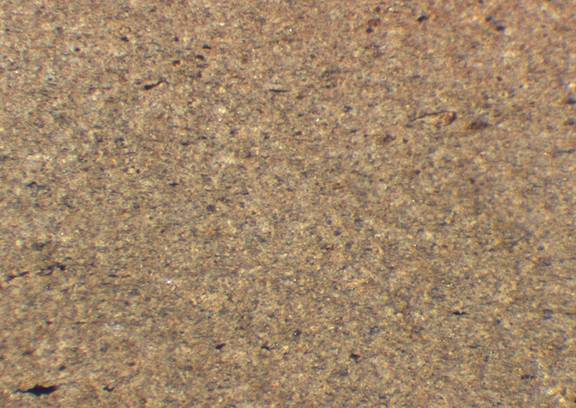

PAE-G-4, M 2/127, 40x


PAE-G-4, M 2/127, 25x


PAE-G-4, M 2/127, 16x


PAE-G-4, M 2/127, 8x
| fabric description | object data | archaeometry |
| fabric type | PAE-G-4 |
|---|---|
| ware | Glazed Wares |
| supposed site of production | Paestum |
| certainty of arguments | archaeometric: not certain |
| visual excamination of fresh break | brown, fine; no visible inclusions |
| colour of freshly broken section (munsell) | 7.5YR5/3 |
| texture of freshly broken surface | fine |
| hardness | hard |
| porosity | 1%; void form: channel; vughy; void length: 0,04-0,24 |
| inclusions | 1%, length: 0,02-0,12 |
| sorting | moderately sorted sand |
Inclusions |
|
| mica | frequent, angular, spherical, white, 0,02 |
| calciumcarbonate | infrequent, well rounded, very spherical, white, 0,04-0,08 |
| reddish inclusions | infrequent, well rounded, subspherical, rust coloured, 0,12 |
| black inclusions | infrequent, well rounded, very spherical, black, 0,04-0,08 |
Cite this page as: FACEM - http://facem.at/pae-g-4

 production
production
 sampling
sampling


